CIRBP
-
Official Full Name
cold inducible RNA binding protein -
Overview
Cold-inducible RNA-binding protein is a protein that in humans is encoded by the CIRBP gene. -
Synonyms
CIRBP;cold inducible RNA binding protein;cold-inducible RNA-binding protein;CIRP;glycine rich RNA binding protein;A18 hnRNP;A18HNRNP;CIRBP_HUMAN;Glycine-rich RNA-binding protein CIRP;glycine-rich RNA binding protein;cold inducible RNA-binding protein
Recombinant Proteins
- Human
- Chicken
- Mouse
- Zebrafish
- Rhesus macaque
- E.coli
- Wheat Germ
- Mammalian Cells
- HEK293
- In Vitro Cell Free System
- His
- Non
- DDK
- Myc
- Avi
- Fc
- GST
- Flag
Background
What is CIRBP Protein?
CIRBP (Cold-Inducible RNA-Binding Protein) is a stress-responsive protein that plays a vital role in cellular adaptation to environmental challenges such as cold, hypoxia, and UV radiation. It functions as an RNA-binding protein, regulating the stability and translation of target mRNAs involved in DNA repair, cell cycle control, and stress responses. CIRBP is also implicated in neuroprotection, cancer biology, and ferroptosis regulation by modulating mitochondrial ferritin (FTMT) mRNA stability. Its diverse roles in stress adaptation and disease mechanisms make CIRBP a key focus for research in therapeutic development and molecular diagnostics.What is the Function of CIRBP Protein?
The CIRBP (Cold-Inducible RNA-Binding Protein) is a multifunctional stress-responsive protein that plays a critical role in cellular adaptation to environmental stressors such as cold, hypoxia, and UV radiation. It regulates RNA metabolism by stabilizing target mRNAs, including those involved in DNA repair, cell cycle control, and stress responses. CIRBP also modulates ferroptosis by stabilizing mitochondrial ferritin (FTMT) mRNA, reducing iron overload and oxidative damage. Additionally, it influences HIF-1α expression, impacting tumor growth and hypoxia adaptation. These functions highlight CIRBP's importance in stress responses, cancer biology, and neuroprotection, making it a key focus for therapeutic research.CIRBP Related Signaling Pathway
CIRBP (Cold-Inducible RNA-Binding Protein) is intricately involved in multiple signaling pathways, particularly those related to cellular stress responses and cancer progression. It regulates HIF-1α expression by binding to its mRNA 3'UTR, enhancing mRNA stability and promoting tumor growth in bladder cancer. Additionally, CIRBP modulates ferroptosis by stabilizing mitochondrial ferritin (FTMT) mRNA, reducing iron overload and lipid peroxidation in hypoxic conditions. These pathways highlight CIRBP's role in stress adaptation, cancer biology, and neuroprotection, making it a potential therapeutic target for hypoxia-related diseases and cancer.CIRBP Related Diseases
CIRBP (Cold-Inducible RNA-Binding Protein) is associated with various diseases, particularly those involving cellular stress and neurological disorders. It plays a protective role in hypoxia-induced conditions, such as perinatal hypoxia, by mitigating neuronal ferroptosis—a form of iron-dependent cell death. CIRBP is also linked to neurodegenerative diseases like Alzheimer's, where it reduces amyloid β-induced neurotoxicity and oxidative stress. Additionally, its involvement in regulating mitochondrial ferritin (FTMT) mRNA stability suggests implications in iron metabolism disorders and certain cancers. These connections highlight CIRBP's potential as a therapeutic target and biomarker for stress-related and neurological diseases.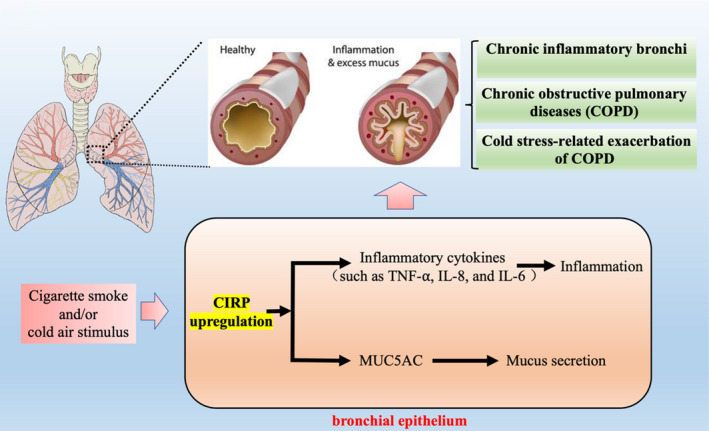
Fig1. The role of cold-inducible RNA-binding protein (CIRP) in bronchial diseases. (Peng Zhong, 2022)
Bioapplications of CIRBP
CIRBP (Cold-Inducible RNA-Binding Protein) is a key stress-responsive protein involved in cellular adaptation to environmental challenges such as hypoxia, cold, and UV radiation. It plays a significant role in cancer therapy, particularly in nasopharyngeal carcinoma (NPC), where it regulates thermoresistance by enhancing DNA repair mechanisms. Suppressing CIRBP sensitizes cancer cells to hyperthermia, offering a promising strategy to target cancer stem-like cells. In neuroprotection, CIRBP mitigates hypoxia-induced neuronal apoptosis by modulating HIF-1α and miRNA activity, presenting potential therapeutic avenues for high-altitude-related neurological disorders. Widely used in molecular biology, CIRBP is applied in techniques like ELISA, Western Blot, and Immunohistochemistry, supported by validated antibodies and cloning tools. Advances in computational biology, such as the CRBPDL model, have further elucidated its interactions with circRNAs, enhancing our understanding of its role in RNA metabolism and cellular homeostasis. These diverse functions highlight CIRBP's potential as a therapeutic target and a crucial tool in cancer research, neuroprotection, and molecular diagnostics.Case Study
Case Study 1: Yao F. et al. Int Immunopharmacol. 2024
Researchers discovered that rheumatoid arthritis is tied to overactive synoviocytes fueled by CIRP protein. In RA, CIRP levels spike, making cells multiply and churn out inflammatory signals. Blocking CIRP with an inhibitor eases these effects and arthritis symptoms. They also found that CIRP works through TLR4 and HDAC3, and targeting these can calm down the inflammation. This points to CIRP as a potential target for new RA therapies.-
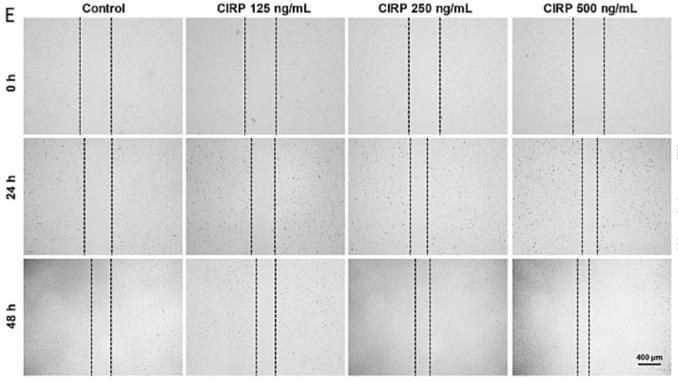 Fig1. Representative images and quantification of wound closure rate by wound closure assays after treated with CIRP.
Fig1. Representative images and quantification of wound closure rate by wound closure assays after treated with CIRP. -
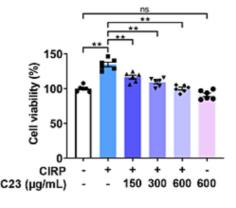 Fig2. RA-FLSs were treated with C23 and stimulated with CIRP (250 ng/mL) for 24 h, and then the viability of RA-FLSs was measured by MTT assay.
Fig2. RA-FLSs were treated with C23 and stimulated with CIRP (250 ng/mL) for 24 h, and then the viability of RA-FLSs was measured by MTT assay.
Case Study 2: Corre M. et al. Nucleic Acids Res. 2023
Cells fight back against bacteria by changing how they express genes. Researchers studied how intestinal cells respond to Listeria, a foodborne pathogen, using advanced transcriptomics. They found that the protein CIRBP and some splicing factors switch to different forms due to bacterial toxins damaging cell membranes. This change affects how well the bacteria can survive inside cells. The findings show that controlling gene expression at the isoform level is crucial for managing infections.-
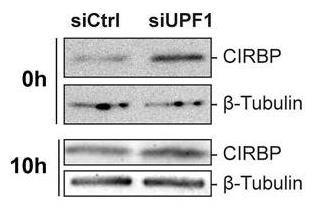 Fig3. Assessment of CIRBP protein abundance by immunoblot on lysates.
Fig3. Assessment of CIRBP protein abundance by immunoblot on lysates. -
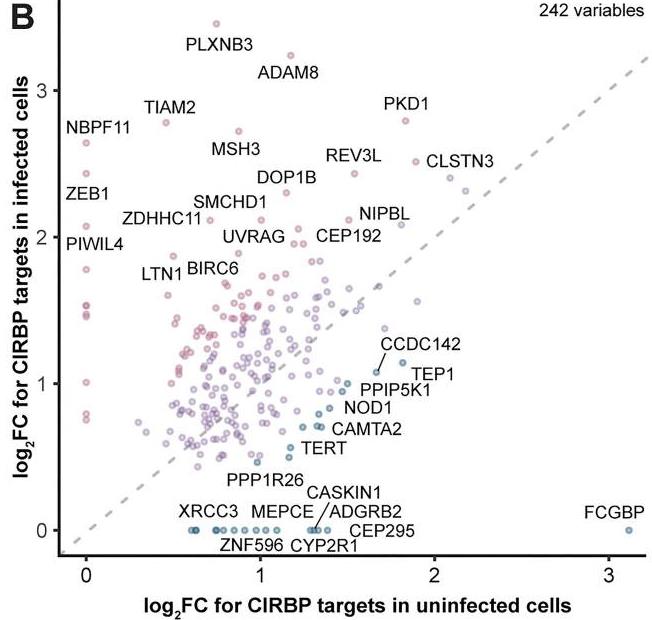 Fig4. Scatter plots of changes in enrichment of significant CIRBP targets in uninfected versus Lm-infected cells.
Fig4. Scatter plots of changes in enrichment of significant CIRBP targets in uninfected versus Lm-infected cells.
Quality Guarantee
High Purity
-
.jpg) Fig1. SDS-PAGE (CIRBP-27194TH)
Fig1. SDS-PAGE (CIRBP-27194TH) -
.jpg) Fig2. SDS-PAGE (CIRBP-604H)
Fig2. SDS-PAGE (CIRBP-604H)
Involved Pathway
CIRBP involved in several pathways and played different roles in them. We selected most pathways CIRBP participated on our site, such as , which may be useful for your reference. Also, other proteins which involved in the same pathway with CIRBP were listed below. Creative BioMart supplied nearly all the proteins listed, you can search them on our site.
| Pathway Name | Pathway Related Protein |
|---|
-
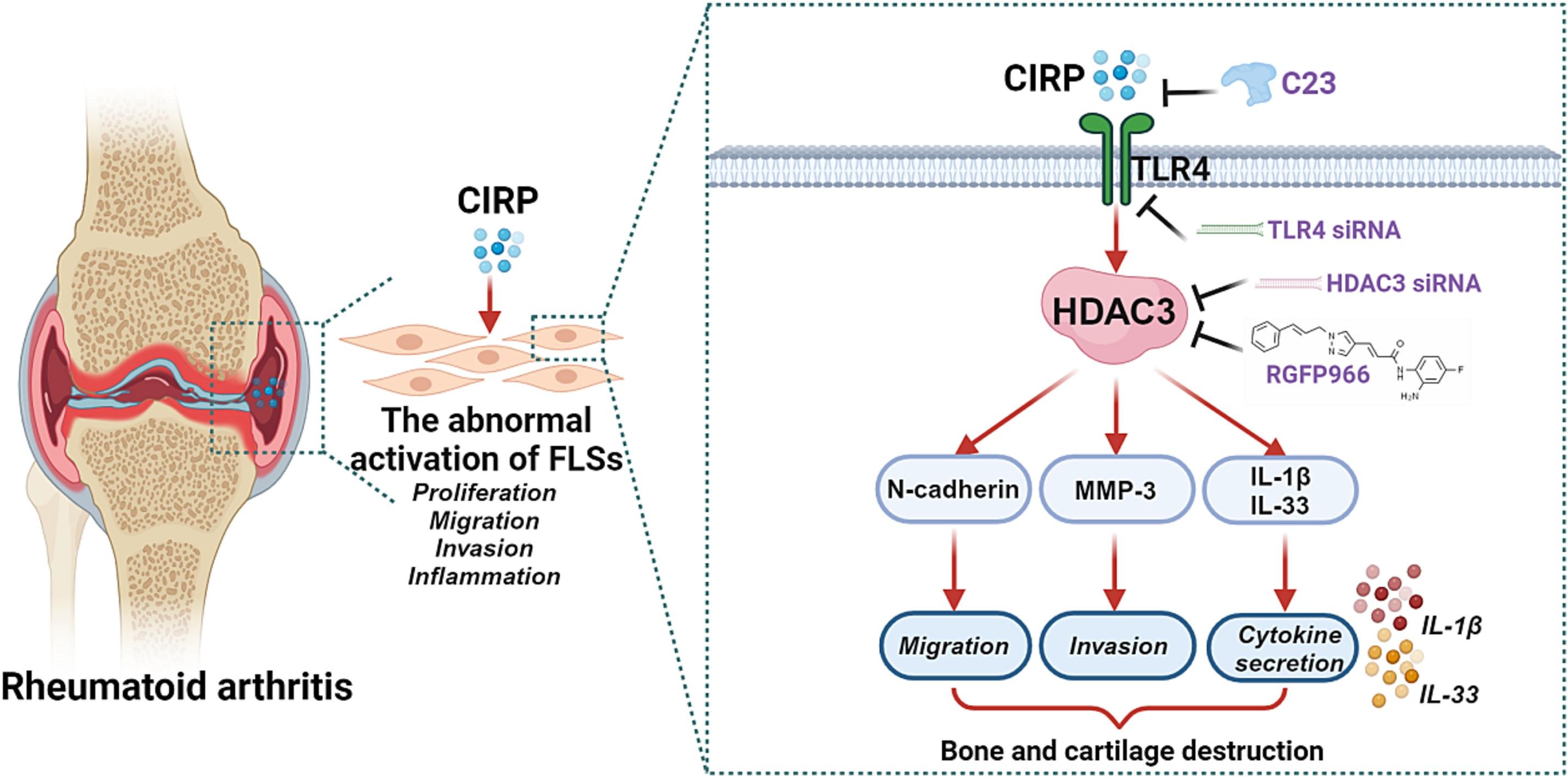 Fig1. Schematic illustration of the TLR4-mediated HDAC3 pathways involved in the effect of extracellular CIRP on abnormal activation of RA-FLS. (Feng Yao, 2024)
Fig1. Schematic illustration of the TLR4-mediated HDAC3 pathways involved in the effect of extracellular CIRP on abnormal activation of RA-FLS. (Feng Yao, 2024) -
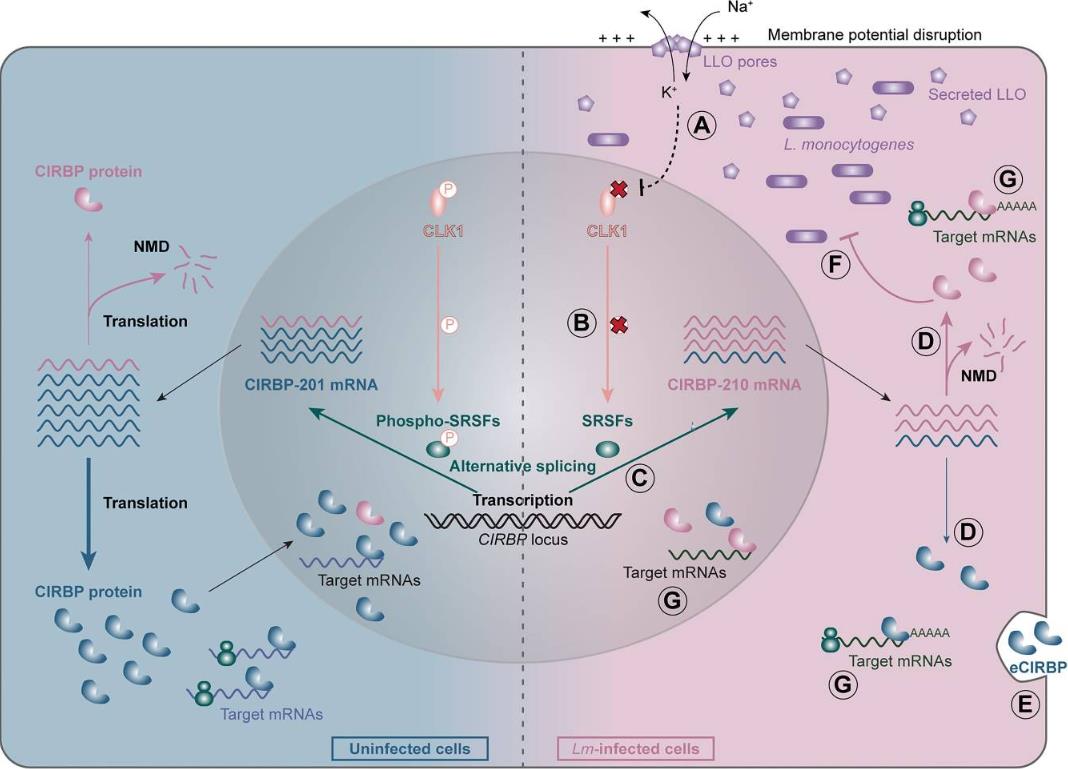 Fig2. Model of CIRBP regulation in response to L. monocytogenes infection. (Morgane Corre, 2023)
Fig2. Model of CIRBP regulation in response to L. monocytogenes infection. (Morgane Corre, 2023)
Protein Function
CIRBP has several biochemical functions, for example, mRNA 3-UTR binding,nucleotide binding,poly(A) RNA binding. Some of the functions are cooperated with other proteins, some of the functions could acted by CIRBP itself. We selected most functions CIRBP had, and list some proteins which have the same functions with CIRBP. You can find most of the proteins on our site.
| Function | Related Protein |
|---|---|
| small ribosomal subunit rRNA binding | UTP23,RPS13,MRPS11,MRPS6,NSUN4,RPS3,RPS14 |
| nucleotide binding | ATP2A1L,ABCC12,SRSF6B,RAB12,MYH9A,PHKG1B,ULK1A,HNRNPA0,CDK12,EEF1A1L2 |
| poly(A) RNA binding | NOL11,MAGOH,PA2G4,SAMSN1,DHX15,RPS3A,TFB1M,NAT10,ATP5C1,STAU1 |
| mRNA 3-UTR binding | FXR1,CPEB1B,ZNF385A,TARDBP,RBMS3,TES,IGF2BP3,RNPS1,KHSRP,AUH |
| protein binding | RPS7,EMILIN1,HSPA4,ARPC3,HMGA1,DROSHA,JIP1,MAGED1,MMRN2,CNNM3 |
| translation repressor activity | SAMD4,PAIP2,SAMD4A,PATL2,IREB2,EIF4EBP1,TRIM71,EIF4EBP3,EIF4EBP2 |
Interacting Protein
CIRBP has direct interactions with proteins and molecules. Those interactions were detected by several methods such as yeast two hybrid, co-IP, pull-down and so on. We selected proteins and molecules interacted with CIRBP here. Most of them are supplied by our site. Hope this information will be useful for your research of CIRBP.
HNRNPK;RBMX;SNRPA;RBMY1A1;RBMY1F;KHDRBS2
Resources
Related Services
Related Products
References


